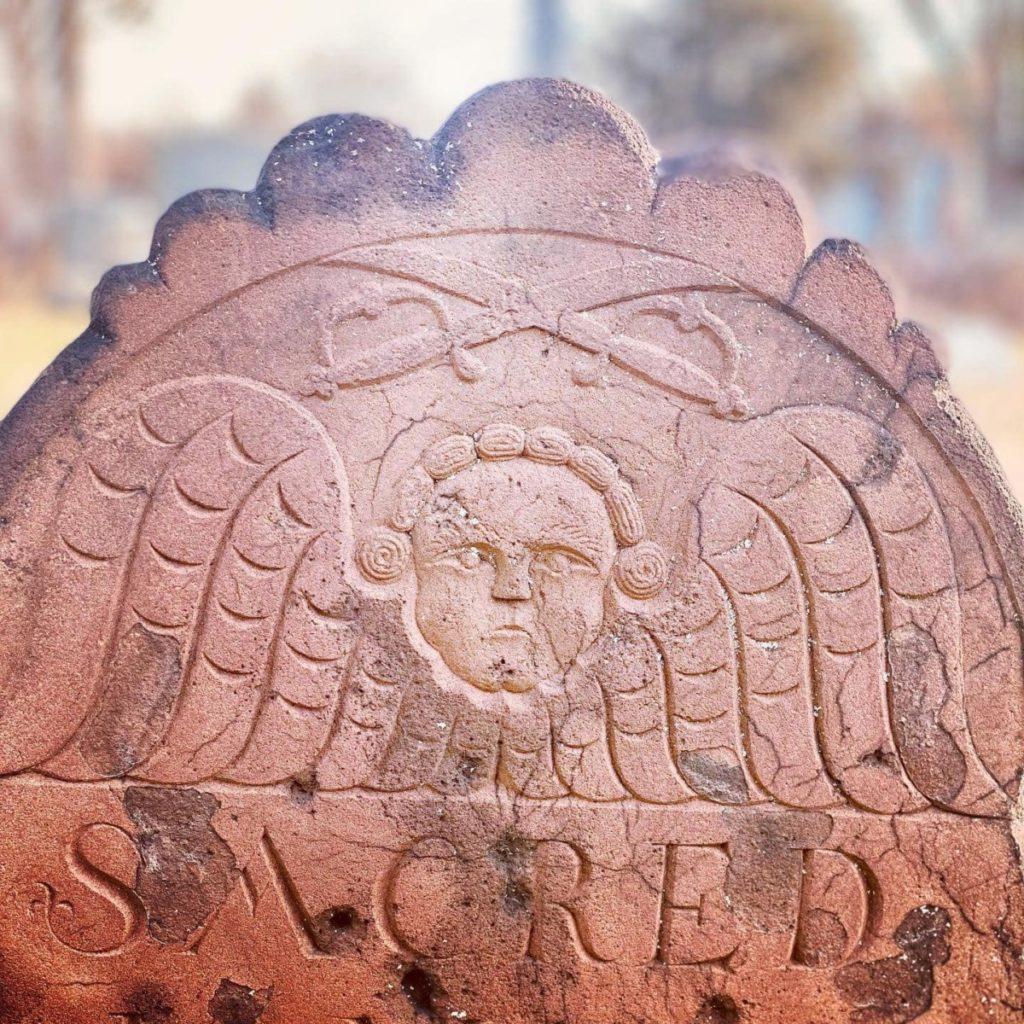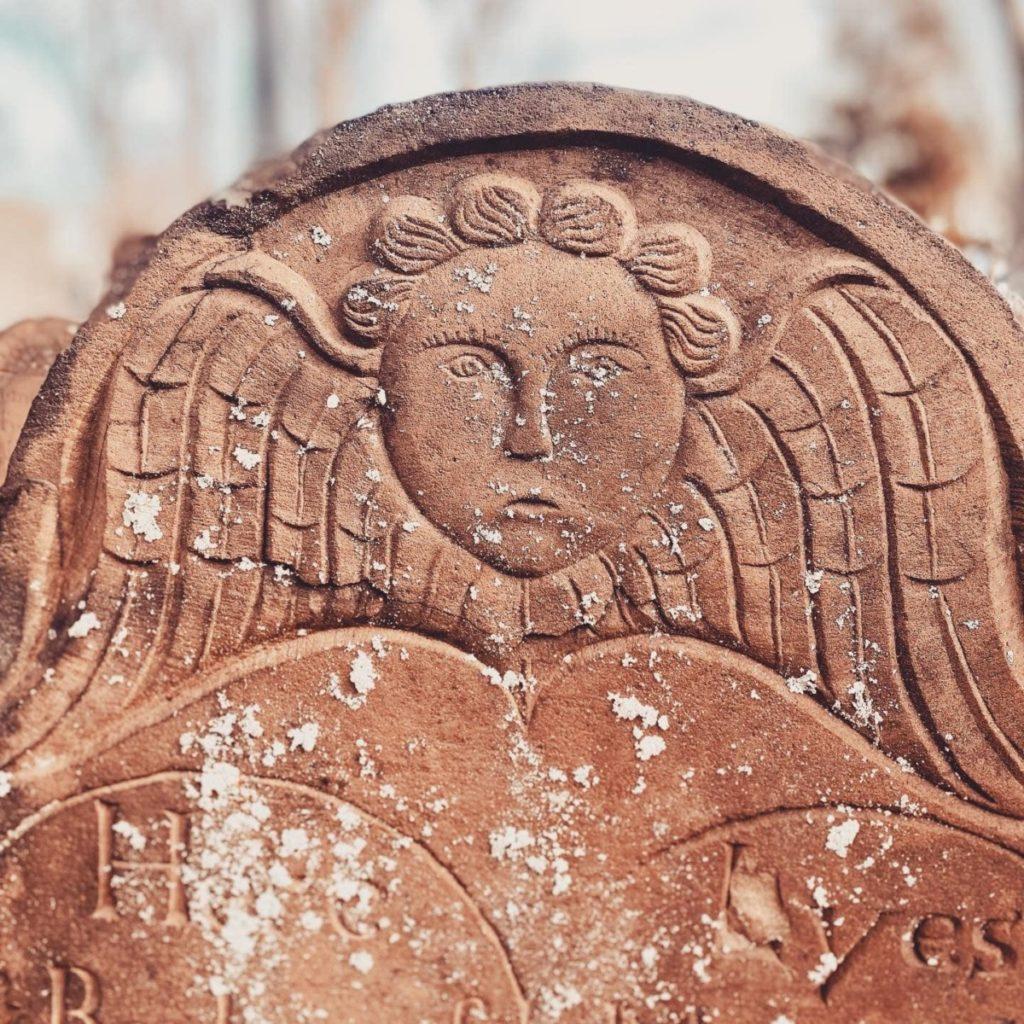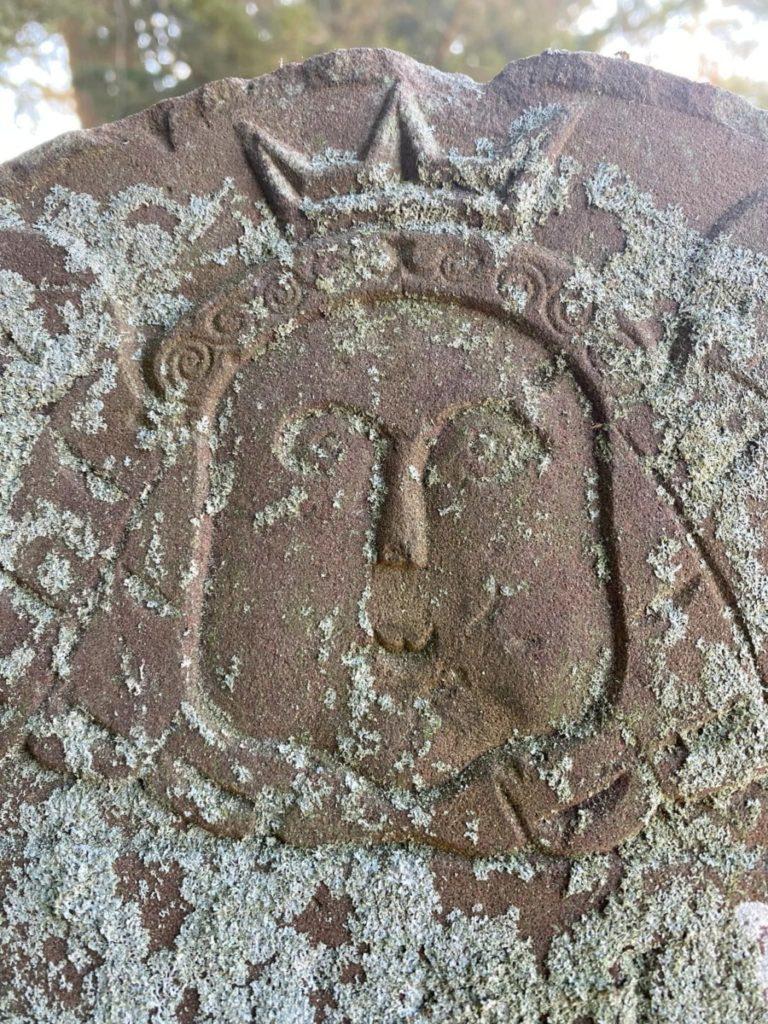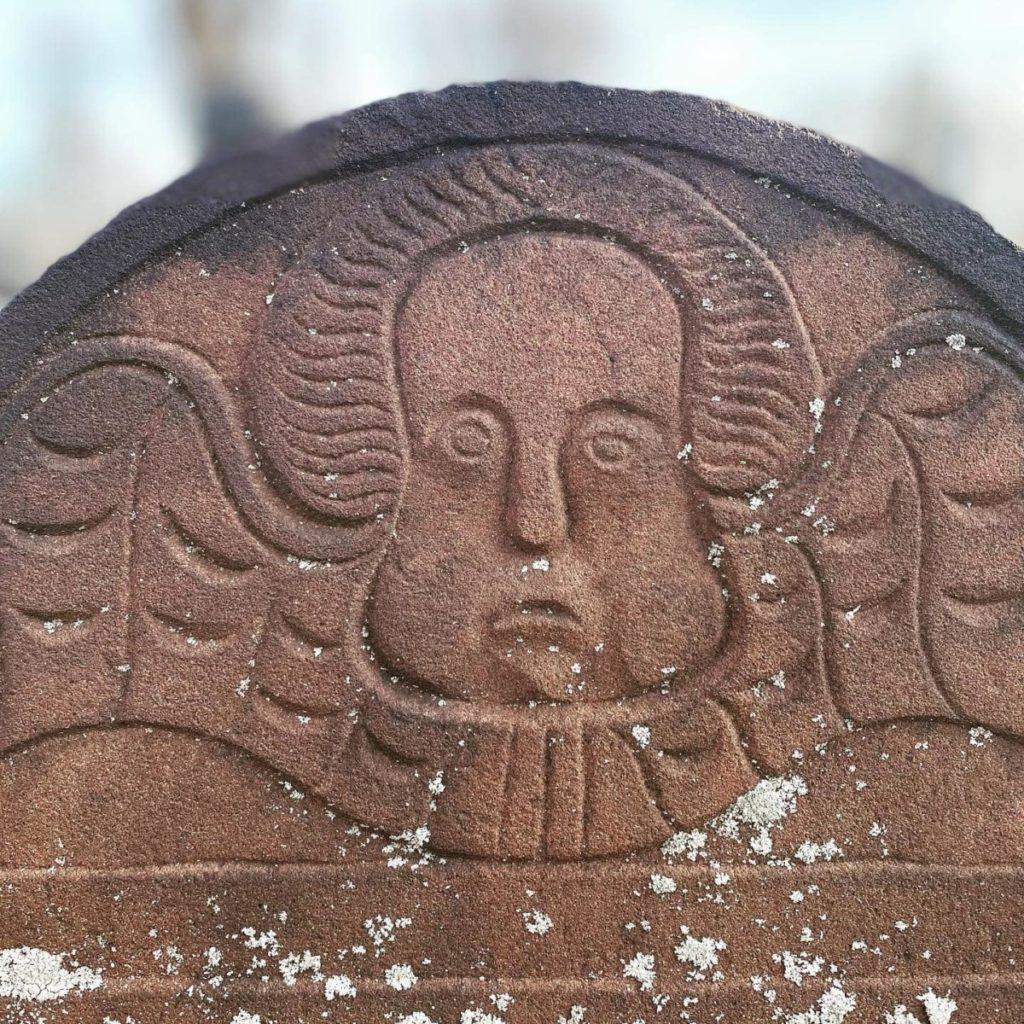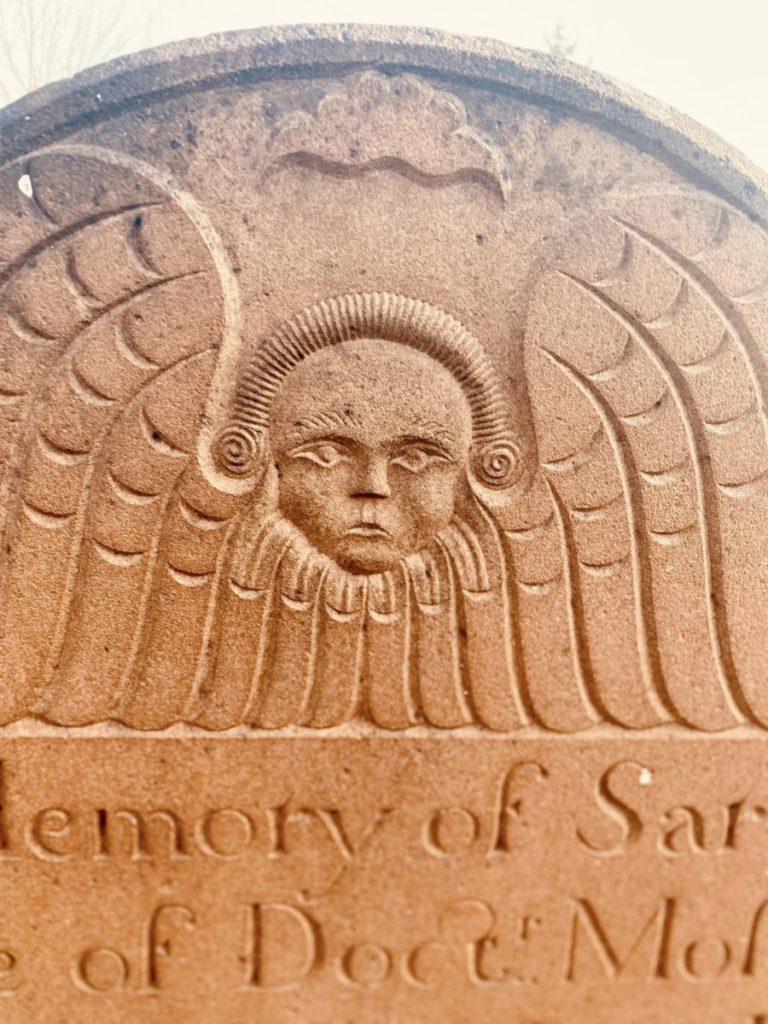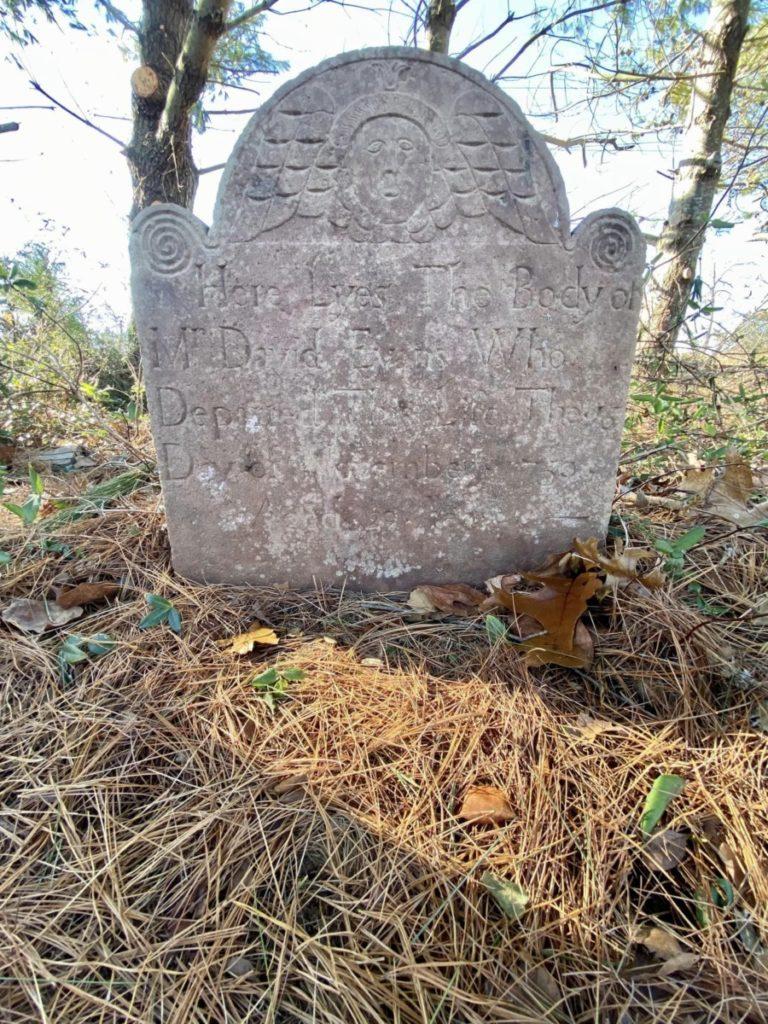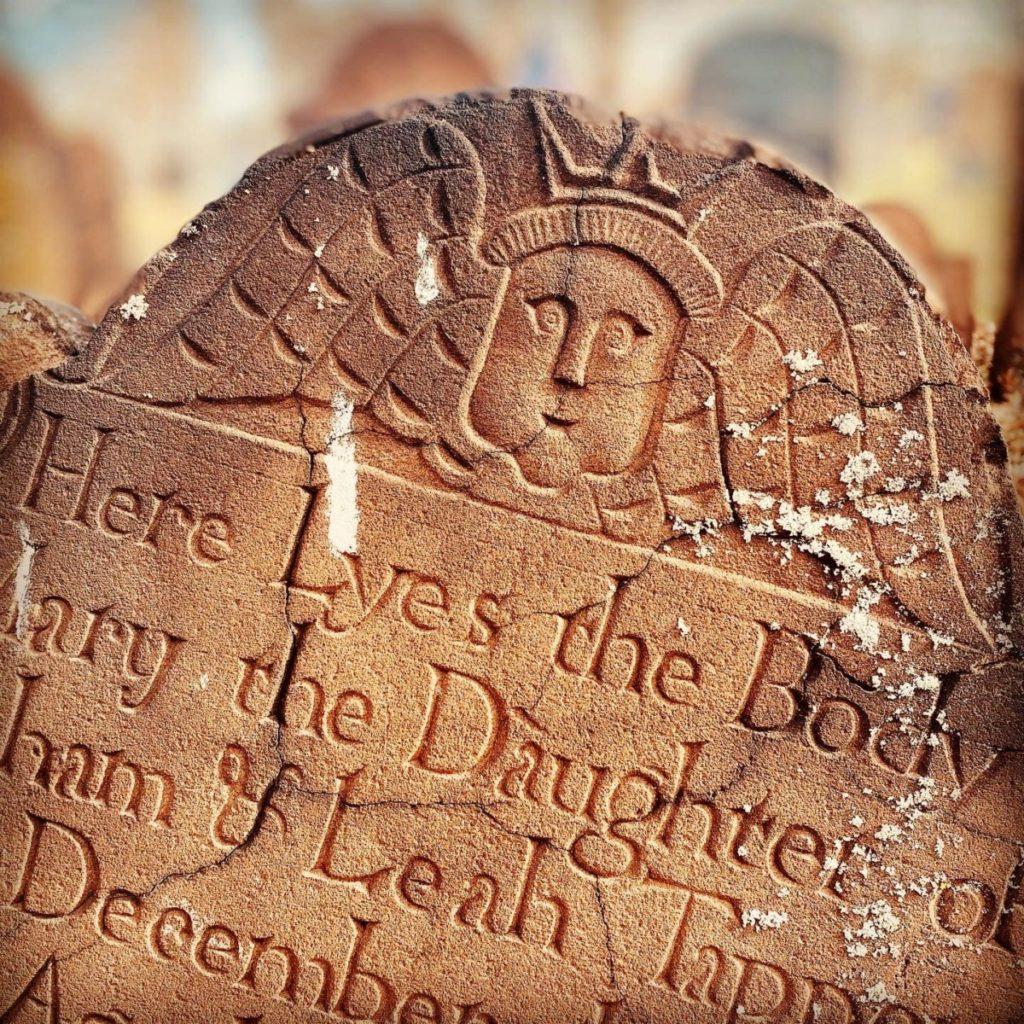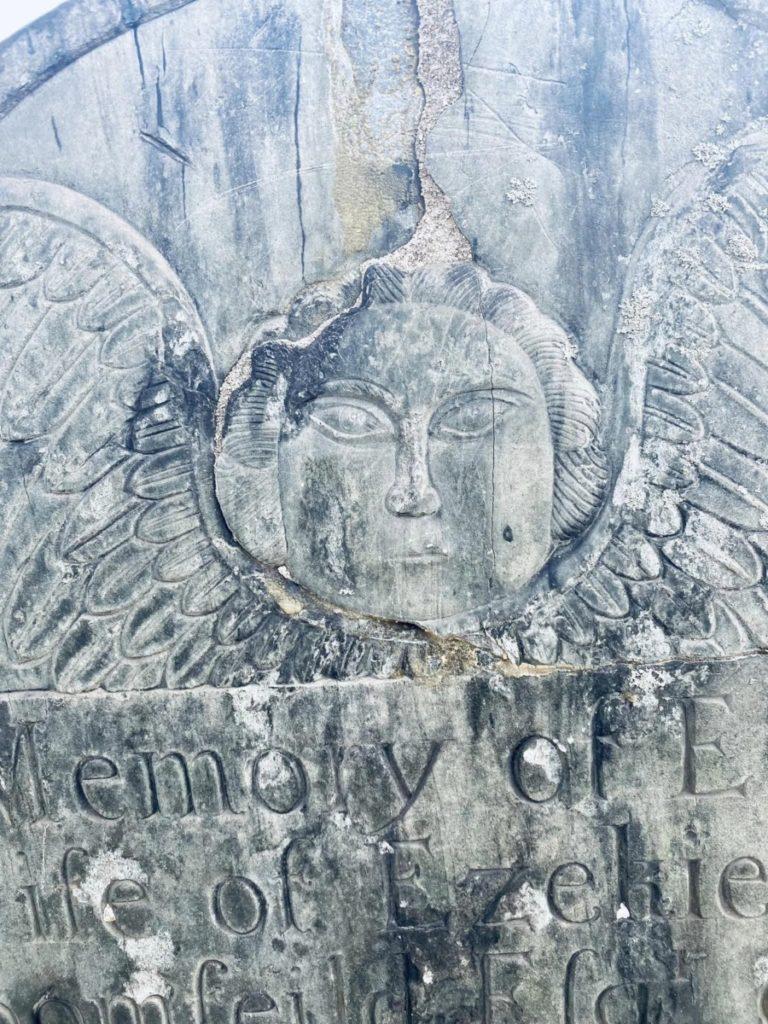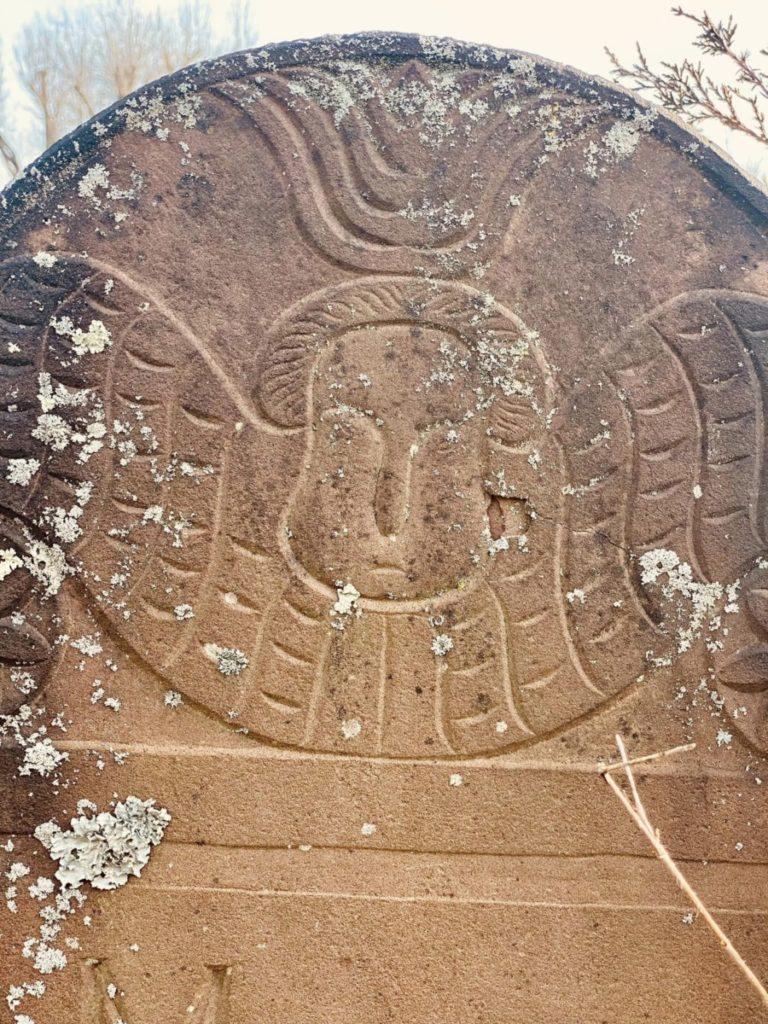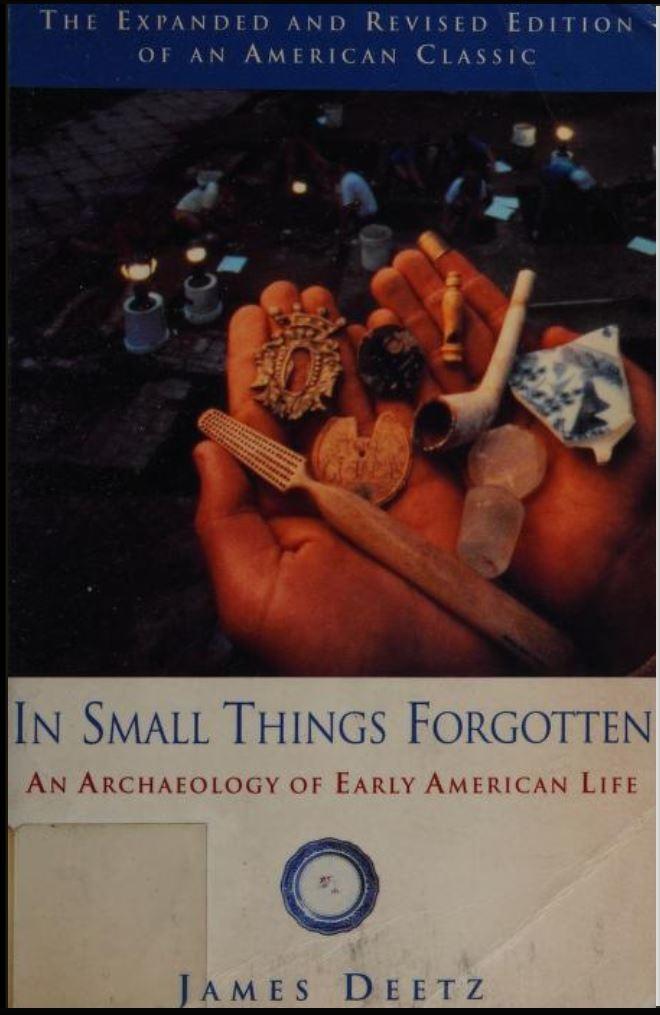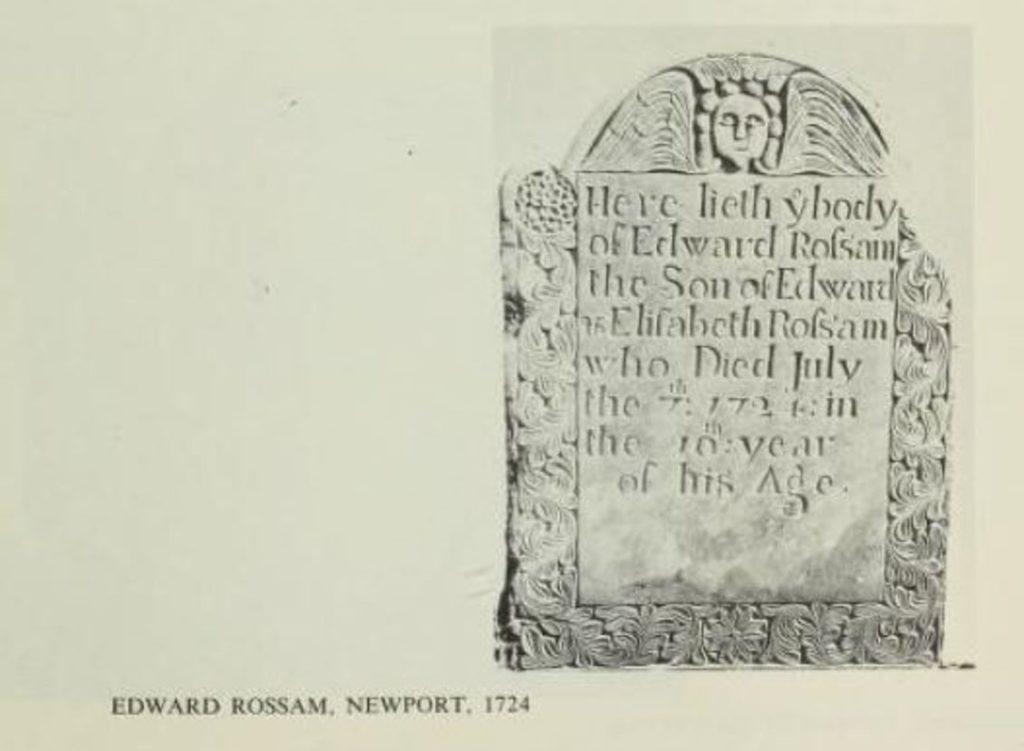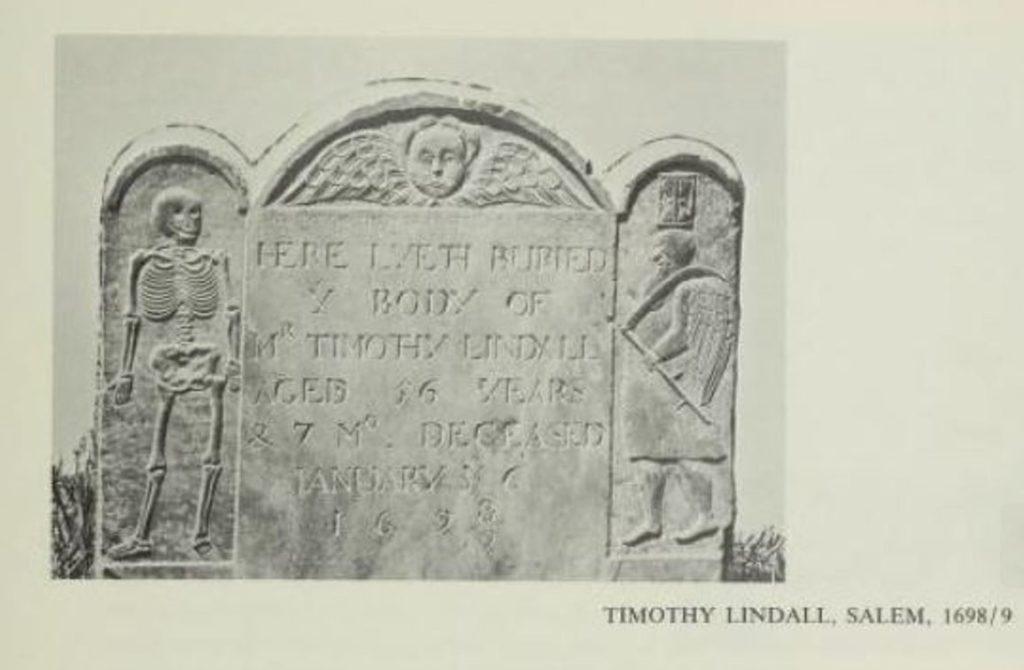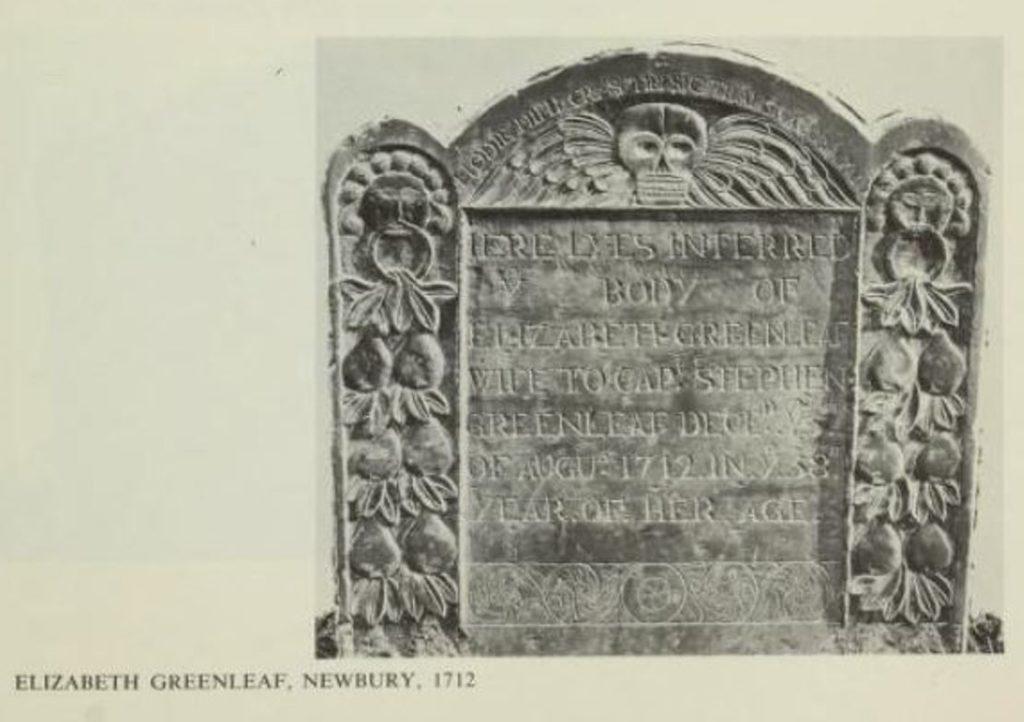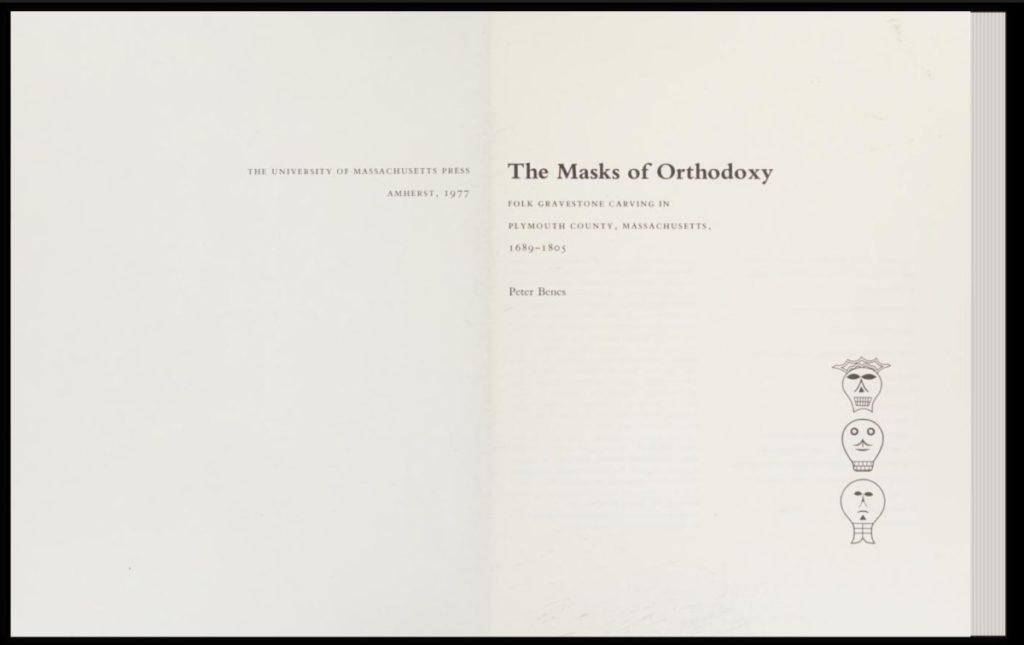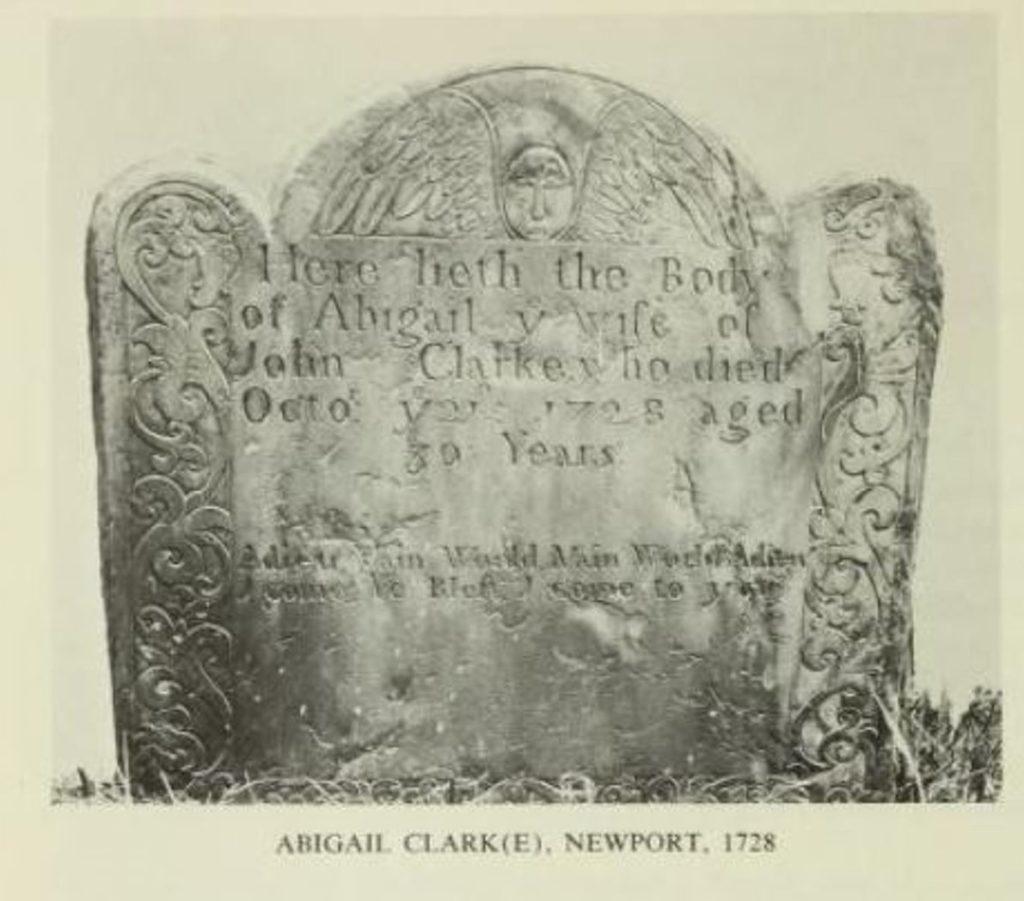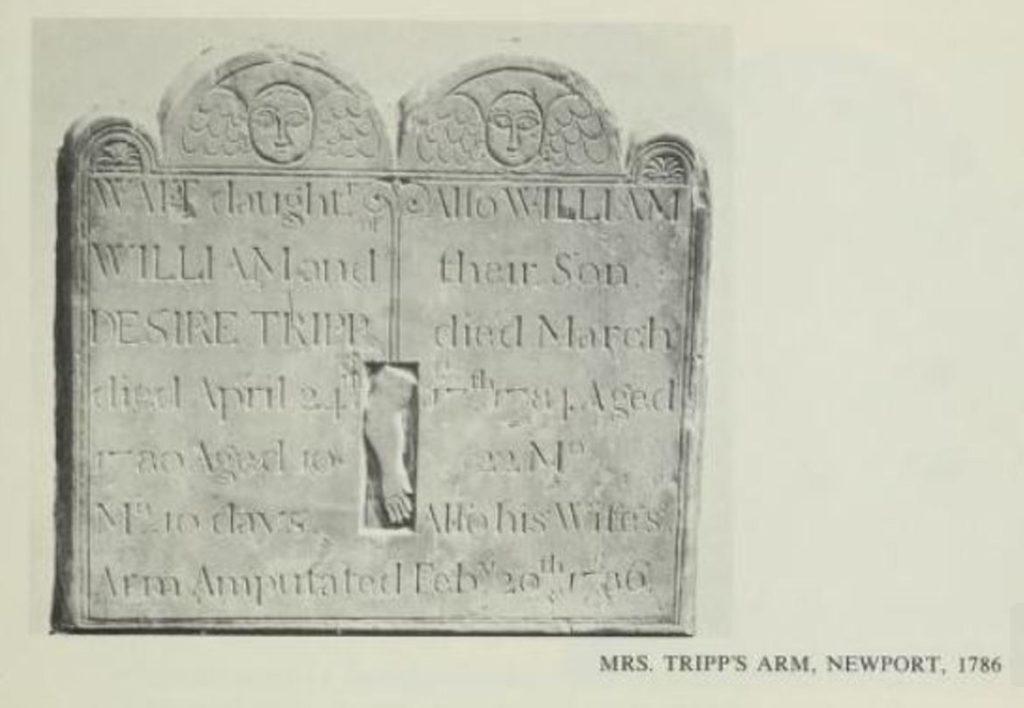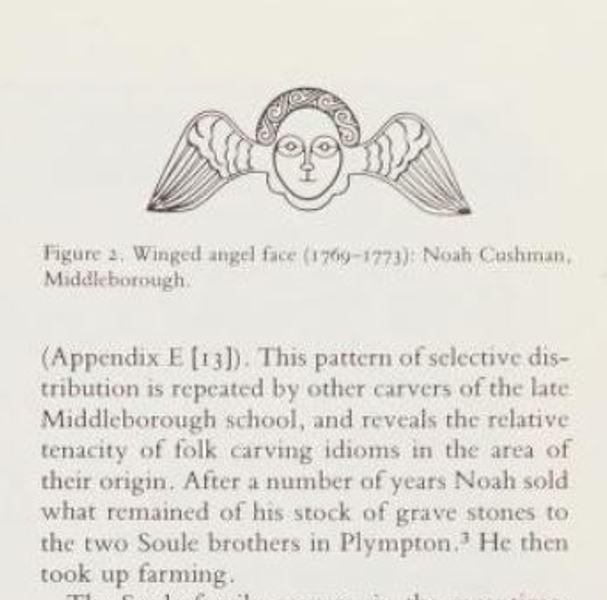Can you help us follow-up the possibility of American Belvoir Angels and try to establish a connection (if one exists …)?
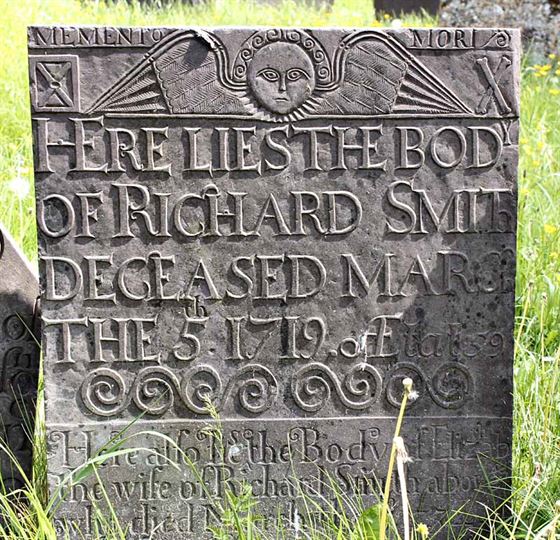
The identity of the craftsman/men behind the carving of the Belvoir Angel headstones is an intriguing aspect of the research into these headstones.
This includes a folk legend that the son of the original sculptor emigrated to America and continued the tradition of these carvings in a small area of New England (6 States in the north-eastern area of America). Whilst this is possible, it is unlikely that this one local connection/example can be responsible for all of the examples found in this area – particularly given the wide variation of styles within the genre in the New England area.
At the centre of the debate are two main ideas (- the reality is likely to be a complicated combination of the two):
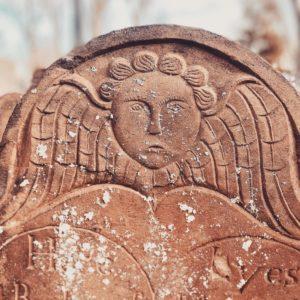
- That all of the Belvoir Angels can be traced back to a single craftsman/family of craftsmen (with an original and innovative concept) and that their style varied over time and/or was copied locally by craftsmen linked to the original (apprentices, family members, loosely connected local craftsmen). This, at some point, spread to America.
- The Wright family of Upper Broughton and Hickling have been proposed as possible candidates (see, The Cobblestones Belvoir Angel).
- That the Belvoir Angels emerged as a locally significant variation of a wider naive art movement; this leads to the idea that other examples found nationally and internationally may not be ‘pure’ Belvoir Angels but that they emerged simultaneously from similar roots.
- Many of the New England headstones seem clearly to have come ‘from the same tradition’ rather than ‘by the same hand’ as their Belvoir cousins.
- Many of the New England headstones use skulls and skeletons as the main image, whereas these symbols tend to be secondary on Belvoir examples (see Forbes example, below).
- Nevertheless, there are a few headstones which are remarkably similar to the Belvoir Angels – an emigration story does seem to be enough of a possibility to make further investigation worthwhile; particularly in the context of population movements at this time.
A selection of photographs taken in New Jersey cemeteries and illustrating the range of styles found there (H Barbaccia)
The Belvoir Angels exist within a short and defined time period; this raises some interesting areas for debate:
- The dating in the early 1700s is significant because they’re just new enough to have survived and just old enough to pre-date national fashions which emerged through pattern books in the late 1700s onwards and which killed off many of the local traditions and individuality/creativity.
- The use of hard-wearing Swithland slate has ensured the survival of large numbers of examples from this period whilst earlier/contemporaneous monuments using other materials have largely disappeared over time.
- There is little evidence of what came before and monument sculpture following this period was significantly less localised.
- They coincide with a period of significant geographical/population movements amongst the Puritan communities of the Midlands and the East of England to the Netherlands and America.
To establish a link (direct or indirect) between the Belvoir Angels and headstones in New England will require some serious and detailed research:
- Analysis and comparison of dates and styles:
- do headstones in both locations appear at similar times or is there evidence of a starting point in the Vale of Belvoir and a later emergence in New England?
- it is said that headstones which bear the closest similarity to the Belvoir Angels don’t appear until a little later (1740s) but this needs analysing properly. However, one of the examples which most resembles the Belvoir Angels is from Salem in 1698 (see Forbes, below).
- Genealogical research:
- American researchers have been able to identify many of the stonemasons in the New England area (Harriette Forbes identified 127 separate individuals, for example).
- Can we find evidence of emigration from the east of England to New England that fits known names and dates?
- Can we find matches for any of these individuals in Parish Records, Wills or Property Deeds in the Vale of Belvoir?
- New Jersey Brownstone: interestingly, many of the American examples seem to be made from New Jersey Brownstone (more research needed): if so, this is an example of using a readily available local material – similar to the use of Swithland slate by the Belvoir stonemasons.
We have a number of resources available to make a start with this type of study but not (at the moment), the time. Please contact us if you would like to work on this and we will share the information that we have at present.
- Harriette M Forbes: Gravestones of Early new England and the Men Who Made Them (book scan available)
- well illustrated with detailed research into individual stonemasons and the areas and headstones they are linked to.
- Peter Bene: Masks of Orthodoxy (book scan available)
- well illustrated with numerous examples of headstones and mapped data
- James Deetz: In Small Things Forgotten (original copy and book scans available)
- A good overview of the ‘archaeology of early American life’. Includes dating and evolution of images and symbolism.
- Richard Veit: Middlesex County New Jersey Gravestones 1687-1799 (pdf available).
- Undergraduate dissertation
- Mark Nonestied & Richard Veit: Carrying on the Stone Cutting Businesss (pdf available)
- overview article

